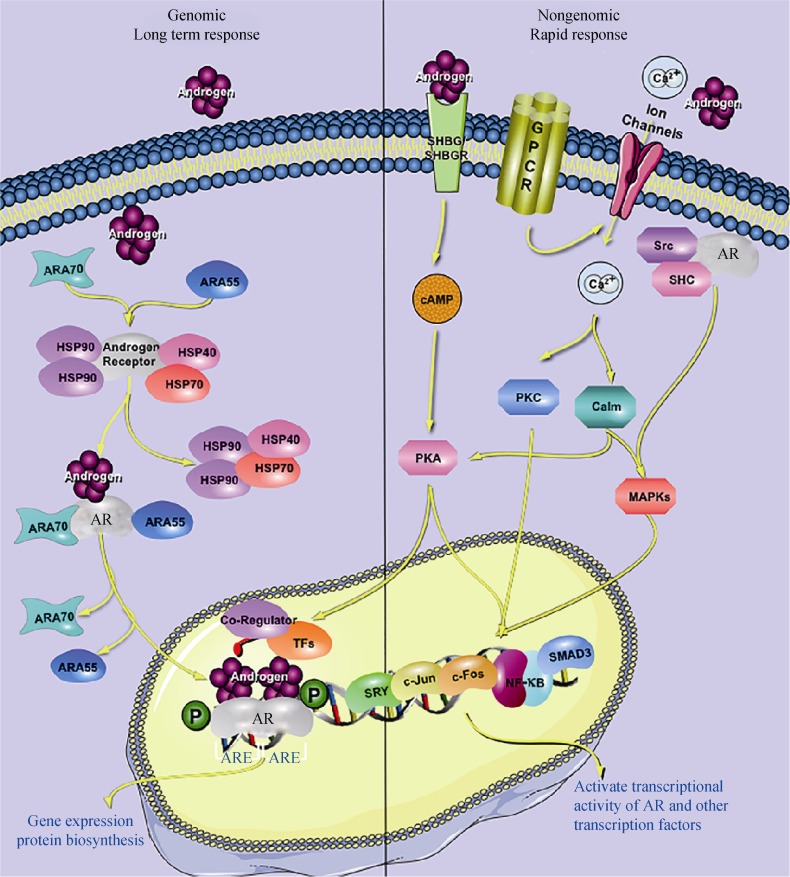Figure 1. The androgen signal pathways.
The steroidal androgens, testosterone and DHT, mediate their biological effects predominantly through genomic pathway by binding to the AR and translocation into the nucleus, thereby facilitating the ability of AR to bind to its cognate response element, and recruiting coregulators to regulate the expression of target genes (left side). The nongenomic stimulation of second messenger cascades by androgens exerts biological effects through modulation of the transcriptional activity of AR or other transcription factors (right side). AR: androgen receptor; ARA: androgen receptor activator; ARE: androgen response element; cAMP: cyclic adenosine monophosphate; DHT: dihydrotestosterone; GPCR: G-protein coupled receptor; HSP: heat shock protein; MAPKs: mitogen-activated protein kinases; PKA: protein kinase A; PKC: protein kinase C; SHBG: steroid hormone binding globulin; SHBGR: SHBG receptor; Src: tyrosine kinase C; SHC: Src homology 2 domain-containing.

